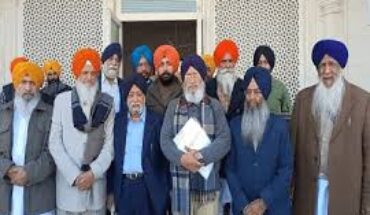Tens of thousands of peasant farmers from across India will set out on Wednesday on a 200-mile march on Delhi in one of the biggest such protests seen in the country for years.
Organisers of the demonstration aim to highlight problems for India’s landless, for hundreds of millions of poor farmers and for so-called tribal communities who often live in resource-rich areas where lucrative mining operations are causing massive environmental damage.
“Millions of people are living in slums, on railway tracks, under plastic sheets … They should have a piece of land to call their own. Others have to make way for factories, roads, airports, mines. I do not accept industrialisation at this cost,” said PV Rajagopal, the veteran activist who leads the Ekhta Parishad organisation behind the march.
Rajagopal and his followers say they are inspired by the example set by Mahatma Gandhi and his ideal of a nation of self-sufficient villages. One aim of the march is to mobilise the hundreds of millions who have not benefited from India’s 20-year economic boom. Today is the anniversary of Gandhi’s birthday and a national holiday.
However, Gandhi’s “vision is being rejected every day in this country”, according to Rajagopal, who made his name by persuading bandits in central India to “lay down their arms” in the 1970s.
The march is an embarrassment for the beleaguered Indian government, a fragile coalition led by the Congress party.
Rural voters have traditionally voted for Congress and their support will be crucial in elections due in 2014. In recent years, the poor have increasingly turned to other, often local, parties.
Jairam Ramesh, the minister for rural development, travelled to Gwalior, the northern India town from which the march will start, to try to convince the marchers to abandon their plan to walk to Delhi.
At a public meeting on Tuesday, he listed measures which he said the government had taken to help India’s rural poor and invited Rajagopal to a meeting in Delhi in nine days.
But organisers refused to abandon the march, saying it would go ahead as planned. In 2007 a similar march resulted in a series of measures which helped, they said, but did not go far enough or were not fully implemented.
Legislation is pending to simplify India’s complex and archaic mechanisms for compensating those forced to quit land to make way for the major projects on which the country’s continued economic growth partly depends. However it is unlikely to be passed in the near future, if at all.
Growth in India has slowed rapidly in recent years, prompting new efforts aimed at boosting foreign investment and reducing the country’s ballooning financial deficit. Huge amounts are currently spent on inefficient subsidies to the very poor.
The marchers, who organisers say number 50,000 – though there appeared to be fewer – come from all over India.
Ramtha Yadav, 26, had travelled for two days to Gwalior with nearly 500 other landless labourers from Uttar Pradesh, where many social and economic indicators are worse than in parts of sub-Saharan Africa.
“We need to march because we cannot trust the government, whatever the minister says. He talks about new laws but how will they actually be enforced on the ground?” Yadav said. “We have no land even for a shelter, without even thinking about farming. When it rains we live under trees.”






